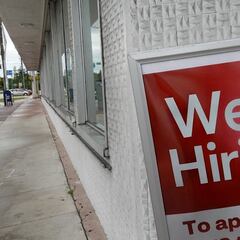Which workers can still get unemployment benefits after quitting their jobs? Exceptions and cases
With Americans quitting jobs in record numbers, many will be wondering whether they will be eligible for unemployment benefits - many won't be.


In September, 4.4 million US workers, almost 3 percent of the entire American workforce, voluntarily left their positions, the highest number since the Bureau of Labor Statistics began tracking “quits” in 2020. The quits rate, the number of quits during the month as a percent of total employment, also jumped to 3%, another all-time high. This is after a previous record set in August of 4.3 million resignations. While this shows the lack of faith workers have in their current jobs, it also precludes many from unemployment benefits. For most occupations in the US, voluntary unemployment means there is no entitlement to unemployment benefits.
While the news of resignations bodes poorly for the US economy, new job takeup is currently outstripping resignations and redundancies. The Labor Department announced that nonfarm payrolls increased by 531,000 in October, with the unemployment rate falling two percentage points to 4.6 percent. The total number of unemployed now stands at 7.4 million people. All these figures beat expectations, which were an additional 450,000 jobs and an unemployment rate of 4.7 percent.
Related news:
- How many people quit their jobs in September and why?
- How did the US unemployment rate change in October?
- Why is the US Federal Reserve ending covid-19 stimulus checks?
- Why is inflation in the US so high?
What do resignations mean for unemployment benefits?
For most reasons there is no social welfare support for those who resign from their jobs.
“Generally, if you voluntarily resign your job, you’re not eligible for unemployment,” according to Paul Sonn, state policy program director at the National Employment Law Project. “It’s not something people who quit their jobs can count on.”
Such strange economic times. Has the US ever before experienced mass resignations (heading toward 10% of the nation’s population) and escalating inflation at the same time? https://t.co/QHrO8OeV9o
— Adam L. Penenberg (@Penenberg) November 12, 2021
However, there are exceptions. One example is workers who are "constructively" dismissed, such as when workers are forced to resign due to unsafe workplaces. This will nearly always lead to a court battle, meaning it could be some months before there is a resolution and the worker can then claim the unemployment support.
Related stories
In the meantime, there are still millions of vacant jobs in the US, with more than 10.4 million job openings in September, according to the Labor Department. That’s the third-highest level on record, behind July, with 11.1 million, and August, with 10.6 million, according to data from the Federal Reserve Bank of St. Louis.
One solution to inflation is for us to create better paying and more dignified jobs. This will increase production and bring down the price. https://t.co/ZMiQqZwScU
— Ro Khanna (@RoKhanna) November 6, 2021
The pandemic has crafted a large worker rethink of priorities. Many are looking for greater flexibility in their job. However, motivations tend to vary on a variety of factors. For example, flexibility tended to be a stronger motivator for those with higher incomes and advanced degrees. A poll conducted in August found that seventy-two percent of workers making under $30,000 a year planned to find a new job, while the rate among people with incomes over $80,000 was forty-forty percent.

